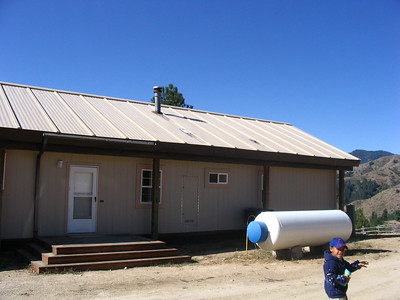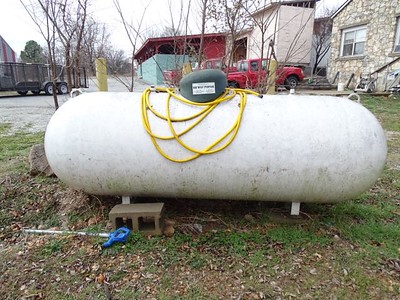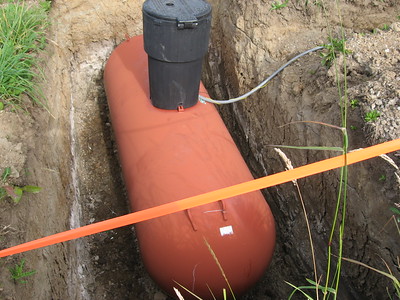
A 250-gallon propane tank has a capacity of 250 gallons of propane gas. This size of tank is commonly used for a variety of purposes, including heating homes, fueling agricultural equipment, and powering commercial operations. The actual volume of propane that the tank can hold may vary slightly depending on factors such as temperature, pressure, and the specific design of the tank. However, a 250-gallon propane tank is capable of providing a significant amount of fuel, making it an ideal choice for many applications.
When it comes to propane tank capacity, the 250-gallon size is one of the most popular options for homeowners. This is because the 250-gallon size is large enough to provide plenty of propane for most homes, but not so large that it becomes too expensive or difficult to manage. If you’re considering a 250-gallon propane tank for your home, here’s what you need to know about its capacity. A 250-gallon propane tank can hold approximately 924 liters of propane.
This is enough propane to supply a typical home for about two months during winter, or longer if you use propane for other purposes such as cooking or heating water. A 250-gallon size is also a good option if you want to have a backup supply of propane in case of an emergency. A full 250-gallon tank can provide enough propane to keep a family of four warm and comfortable for several days in the event of a power outage.
How Long Will a 250-gallon Propane Tank Last?
The amount of time that a 250-gallon propane tank will last will depend on several factors, including the size and efficiency of the appliances that are using the propane, the weather conditions, and the frequency of use. In general, a 250-gallon propane tank should last for several months to a year, depending on these and other factors.
Here are a few things to consider that may affect how long a 250-gallon propane tank will last:
- The size and efficiency of the appliances: Larger appliances or appliances that are not energy efficient will use more propane and will cause the tank to run out more quickly.
- The weather conditions: Cold weather can increase the demand for propane, as it is often used for heating. If you live in a colder climate, you may need to refill your propane tank more frequently during the winter months.
- The frequency of use: The more you use your propane-powered appliances, the more quickly your propane tank will run out.
It is a good idea to keep an eye on the level of propane in your tank and refill it before it runs completely empty. This will help to ensure that you have a consistent and reliable supply of fuel.
How Much Does It Cost to Fill a 250-Gallon Propane Tank?
The cost to fill a 250-gallon propane tank can vary significantly depending on a number of factors, including the location, the time of year, the size of the tank, and the type of propane being used. In general, you can expect to pay anywhere from $500 to $1,000 to fill a 250-gallon propane tank, depending on these and other factors.
Here are a few things to consider that may affect the cost of a propane tank fill:
- The location: Propane prices can vary significantly from one region to another, so the cost to fill a 250-gallon propane tank in one location may be quite different from the cost in another location.
- The time of year: Propane prices tend to be higher in the winter months when demand is higher. If you need to refill your propane tank during the winter, you may pay more than you would during the summer.
- The size of the propane tank: Larger tanks tend to cost less per gallon to fill than smaller tanks because the cost of the propane is spread out over a larger volume.
- The type of propane: There are two main types of propane: commercial grade and residential grade. Commercial-grade propane is typically cheaper, but it may not be suitable for all applications.
To get the best deal on a propane tank fill, it is a good idea to shop around and compare prices from different retailers in your area. Some retailers may offer promotions or discounts that could lower the cost of a propane tank fill.
It is also a good idea to consider other factors that may affect the cost of using propane, such as the efficiency of your appliances and the overall cost of operating a propane system. By considering these and other factors, you can make an informed decision about whether propane is the right fuel choice for your needs.
How Large is a 250-Gallon Propane Tank?
The size of a 250-gallon propane tank can vary depending on the manufacturer and the specific features of the tank. In general, you can expect a 250-gallon propane tank to be about 7’8 feet tall and 30 in diameter. The actual size of the tank may be slightly larger or smaller depending on the specific model.
It’s important to note that propane tanks are typically measured in terms of their liquid capacity, not the volume of the gas they can hold. When propane is converted from a liquid to a gas, it expands significantly. One gallon of liquid propane will expand to about 270 cubic feet of gas when it is vaporized. This is why it is important to make sure that you have enough space in your propane tank to allow for the expansion of the gas as it warms up.
When Installing 250-Gallon Propane Tank, You Have 2 Options
When installing a 250-gallon propane tank, you generally have two options: aboveground installation and underground installation. Both options have their own advantages and disadvantages, and the choice you make will depend on various factors such as cost, space, and local regulations.
Aboveground Installation: This option involves installing the tank above the ground level, typically on a concrete pad or steel supports. Aboveground installation is the simpler and less expensive option and is often the preferred choice for residential and small commercial applications. It also allows for easy access and maintenance of the tank.
Underground Installation: This option involves burying the tank underground, which can be aesthetically pleasing as it helps to conceal the tank. Underground installation can be more complex and costly than aboveground installation, but it provides added protection against damage and theft, and it can also help to conserve space in tight quarters.
It is important to consider the local regulations and codes before installing a 250-gallon propane tank, as different areas may have different requirements for tank placement and installation. It is recommended to seek the advice of a professional in the industry to ensure that your installation complies with all relevant regulations and standards.
To Make a Conclusion
The 250-gallon propane tank is a popular choice for many homeowners as it provides a cost-effective and efficient way to store fuel for heating, cooking, and other energy needs. With its ample capacity, it can provide a reliable source of fuel for an extended period of time, reducing the need for frequent deliveries.
Understanding the capacity of your propane tank and regularly monitoring its level can help to ensure that you never run out of fuel, even during the peak demand seasons. When choosing a 250-gallon propane tank, it is important to consider factors such as your energy usage requirements, local regulations, and the cost and complexity of installation.
With careful consideration, you can make an informed decision that will provide you with a reliable source of fuel for years to come.

Jeremy is a highly experienced professional propane technician with over 21 years of experience in the industry. Throughout his career, he has gained extensive knowledge and expertise in propane gas installation, maintenance, and repair, as well as in ensuring safety and compliance with industry standards. Mike has worked with various residential, commercial, and industrial clients, providing top-notch services and solutions to meet their propane needs. He is dedicated to his craft and passionate about delivering exceptional service to his clients.



